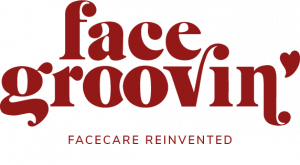Many of us feel a boost when we get a little sun. Maybe it’s that brush of new freckles. The way our skintone evens out. Or how a touch of color can hide the dark circles under our eyes. Typically, after a sun-filled vacation, we feel rested and energetic again — and it’s easy to wrap all of that up in the idea of tanning. But the reality isn’t so nice: The sun and aging go hand-in-hand. So, what’s the best anti-aging product out there? Easy. A good sunscreen!
How to protect your face from the sun
Even if you enjoy showing off a light tan, make the choice to protect your skin from the sun. Nothing is more important than your health — when it comes to your looks, you can get the same effect with a little self-tanner. The sun ages our skin, and also encourages it to thicken. (That’s why acne can appear to clear up in the summer, only to come back worse a few months later.) It can also cause discoloration, on its own and by contributing to hormonal pigmentation (think melasma or „pregnancy mask”). Those who suffer from rosacea, capillary issues, or sensitive skin should be especially careful to avoid the sun. Unfortunately, there’s just no such thing as a „safe” tan, and no sunscreen can block the sun completely. The sun can affect your skin even when you’re wearing SPF 50, PA++++! That’s why it’s important to protect yourself in other ways, too — try wearing a wide-brimmed hat or a baseball cap, or simply avoid the sun altogether. But what is it exactly about the sun’s rays that’s so harmful? Let’s take a look at three different types of solar radiation.
HEV radiation
We hear a lot about “blue light” in the context of sleep and insomnia. It’s part of the light emitted by the sun, but it also shines from the screens of our electronic devices (laptops, tablets, TVs, and smartphones). HEV radiation speeds up premature skin aging and leads to the formation of free radicals.
UVB radiation
UVB radiation is what can give us a tan, but it represents only 5% of the sun’s rays reaching the Earth’s surface. UVB light emits a shorter wavelength than UVA, which is why you can’t sunbathe through a window or on a cloudy day — both stop UVB rays from getting through. Many of us associate tanning with aging and wrinkles, but in reality, the situation is more complex. UVB radiation causes sunburns, sun allergies, and skin cancer. But it’s not enough to use sunscreen only on bright, sunny days or when you hit the beach or the hiking trail. UVA rays can penetrate the skin even when it’s cloudy, during those times when it might seem a bit silly to wear sunscreen — since you can’t feel the heat or get a tan. But that couldn’t be more wrong!
UVA radiation
UVA rays don’t tan or burn your skin — but they do make up 95% of the solar radiation that reaches us. It can penetrate through glass just as easily as through the cloud layer. UVA rays deeply penetrate the skin and causesfree radicals to form, aging our skin (irreversibly!), depleting collagen, and causing discoloration and even cancer. Cosmetologists, doctors, and researchers encourage the use of high-SPF sunscreen year-round, even on the cloudiest days. Choose a sunscreen that protects against UVA, UVB, and ideally also HEV radiation. You’ll find products like these are often described as “broad-spectrum” or “PA++++” — where each plus-sign indicates a higher level of protection against UVA rays (PA++ offers moderate protection, while PA+++ high). Always read the label, and choose wisely!
What makes a „good” sunscreen?
Drugstores and pharmacies are filled with sunscreen products these days. So don’t be afraid of the thick sunblock you remember from childhood — that greasy, white stuff is no longer! Now, you can choose between chemical and physical barriers, as well as sticks, sprays, milks, creams, mists, and powders. What’s the difference? Here’s some information to help you pick.
Physical sunscreens
Also known as mineral sunscreens. These products form a protective layer on the skin in order to prevent the sun’s rays from penetrating it deeply. They’re perfect for people with sensitive skin, and for children, pregnant women, or those using hormonal contraception. The one downside is that they can lend a (temporary!) white color to the skin, due to the large particles they contain to filter the sun.
Chemical sunscreens
These work thanks to a chemical reaction. Organic compounds absorb UV radiation and convert it into thermal energy, rendering it harmless. One advantage is that these are friendlier to use than physical filters, and you’ll also avoid the „white-out” effect. The one downside is that chemical sunscreens’ organic filters may irritate sensitive skin.
Demystifing SPF
It’s important to choose a sunscreen with a high SPF, or Sun Protection Factor. A product’s SPF indicates the ratio of the amount of UV radiation that would cause a sunburn while using the sunscreen versus without it. Can we translate that for you? SPF tells us how long we can stay in the sun before we burn. So, let’s assume your skin will start burning after 15 minutes of sun exposure. If you use a sunscreen with an SPF of 50, you can multiply 15 minutes times 50 in order to get the number of minutes you can spend protected out in the sun. The exact time for you depends on your complexion, among other factors — for a pale redhead, you may burn after 7 minutes, while for those with darker hair and/or skin, it might take 25. You know your own skin, so do the math accordingly. Remember, no amount of sun exposure is “safe,” and the SPF factor represents the level of protection against UVB radiation only.
We suggest sticking to sunscreens of SPF 30 or higher. Make sure to reapply it regularly — always after coming into contact with water, and after the amount of time as calculated above.
Wydajny filtr do twarzy to mit
Ostatnio Gwyneth Paltrow pokazywała, jak smaruje “najbardziej narażone na opalanie” punkty na swojej twarzy kremem przeciwsłonecznym. Wyglądało to bardziej, jakby chciała posmarować nos rozświetlaczem. Masz już świadomość, że powinnaś chronić całą twarz zarówno przed promieniowaniem UVA jak i UVB, ale czy wiesz, że potrzebujesz go dla skutecznej ochrony naprawdę dużo? Oto co mówi na ten temat wielka zwolenniczka pielęgnacji skóry kosmetykami przeciwsłonecznymi Skin Coach Blanca Społowicz: “Jeden z najczęstszych błędów, jakie obserwuję, to uleganie złudzeniu, że filtr w kremie BB lub w podkładzie wystarczy. Żeby filtr utworzył na Waszej skórze twarzy jednolity film ochronny i skutecznie Was chronił przed UV, powinnyście aplikować go od 0,8 -1,25 ml. Jest to mniej więcej tyle, ile zmieści się na całej długości palca wskazującego i środkowego. Wyobraźcie sobie nałożenie takiej ilości fluidu na twarz — jest to właściwie niemożliwe.”
Dlatego nie możesz marzyć, że filtr zawarty w podkładzie czy kremie BB będzie wystarczającą ochroną przed promieniowaniem.
Na co jeszcze zwrócić uwagę kupując krem do twarzy z filtrem?
Wybieraj kosmetyki oznakowane jako Broad Spectrum — oznacza to, że ochronią Cię nie tylko przed UVB, ale też UVA i HEV.
Szukaj filtrów z symbolem UVA w kółeczku lub PA++++ — co oznacza, że Twój kosmetyk będzie działał przeciwstarzeniowo i chronił Cię przed promieniowaniem UVA.
A na koniec: jeśli naprawdę lubisz opaleniznę, skorzystaj z kremów lub esencji brązujących lub samoopalających. Tak samo, jak rynek filtrów przeciwsłonecznych ruszył do przodu, tak samo samoopalacze nowej generacji nie barwią skóry na kolor świątecznej pomarańczy i nie pachną jak ich przodkowie sprzed dekady :).


